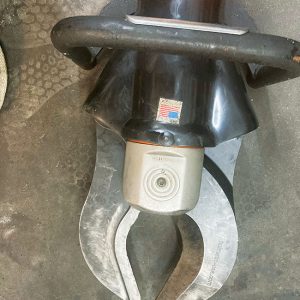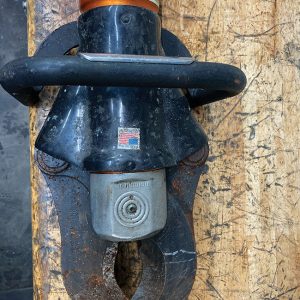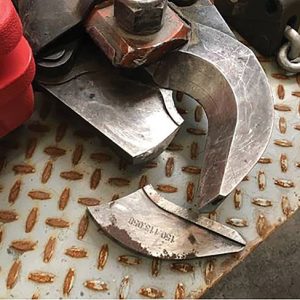
Extrication Tips: Often overlooked
Chad Roberts
Features Training with industry tool experts like Ruben Markuc can give us great insight in new tool use and best care practices.
Training with industry tool experts like Ruben Markuc can give us great insight in new tool use and best care practices. With the year 2020 finally behind us, we look forward to this turn of the calendar. Unfortunately, we are seeing a lot of similarities between 2020 and 2021. The pandemic ridden year has given us opportunity to embrace in station training and online options, but with that all being said and for the time being, we need to keep things fresh and focus on new things to stimulate our minds. With more information available online and through working with our crew mates, we have to be careful not to overlook the simple things. And with spring upon us, I thought it would be great to finally touch on one of the most overlooked and misunderstood things in the auto ex world — tool maintenance.
Although not the most exciting subject, this is an area we cannot afford to turn a blind eye to, especially in weather extremes. Pulling the tools off the truck, starting the motor and turning it off is not acceptable. In the case of newer battery alternatives, simply checking the battery is not a sufficient check. Your hydraulic extrication tools are life-saving devices just like any other on your apparatus. When checking our SCBA before every shift we are taught to be thorough and check the different operational functions. This meticulous method should be applied to every tool on our trucks, especially some of our most expensive and versatile, such as hydraulic extrication tools. To better understand and explain some of the most important things related to tool maintenance, I sat down with Ruben Markuc of 1200 Degrees to break down some maintenance ideas we can do around the hall and better understand what manufacturers and vendors recommend to keep our tools in peak performance.
Markuc has been with 1200 degrees for over three years and has quickly made a name for himself, not only for his superior care and maintenance of Holmatro tools across Ontario, but also for his great knowledge of the product and its capabilities. Markuc was able to help me provide some great tips here on how we can keep our rescue tools ready.
First and foremost, we can’t just buy these tools, put them on our trucks and expect them to work at any given time from year to year without routine maintenance. Like all of our equipment checks there are some things we can do in station that will help improve the longevity and capability of our tools, which I will touch on, but we must remember that developing a relationship with our local sales and service reps is the first step towards care. Annual inspections and service may include such care as removing blades and arms along with re-greasing and torqueing, which is just the beginning of what they can provide. Other maintenance such as psi/rpm tests, inspecting power units and operation handle inspections are some of the things we to think about when delaying service with our reps.
Outside of sales and service, these reps can educate us on many things we can be doing on a weekly and monthly basis to help maintain our hydraulic tools in between service visits. Three things I want to touch on are checking/running your tools, cleaning, and a few operational best practices ideas.
First off is our checks. Whether your department requires daily or weekly checks, we need to be more diligent than simply starting up these tools, letting them run and then turning them off. The tool, whether it be cutter, spreader or ram needs to be fully extended and closed/retracted. At each max opening and retraction, you should be holding the tool in these positions and listening for two reasons. The first is to ensure your tool is properly achieving a successful and seamless transfer into maximum high pressure stage. While in this stage, there should be no hydraulic leaks from anywhere in the system or unusual noises while operating at its highest pressure mode (with battery operated tools, be sure we are testing our tools with a fully charged battery to ensure appropriate pressure levels are reached).
Next is cleaning. While doing our daily checks we should be giving the tool a once over physical check. Any rust should be removed with a wire brush and the tool wiped down with a cloth. If lubrication is needed, which shouldn’t be very often as it is generally only completed on annual rep inspections, use a silicon based lubricant (such as Krown Rust protectant). Check the blades for any obvious cracks, burrs and that the teeth on the spreader tips and/or combination tool are free of any debris. If your running tools on a hose system ensure that your connections are capped, and free of any dirt or debris that could get into your hydraulic system.
Although not overly complicated or demanding of us, our role in maintaining our tools does not stop here. We must be diligent when operating tools not to put them in precarious or damaging situations that will unnecessarily put our tools out of service. When making cuts, make sure we are making them as deep as possible and the material is as close to our centre bolt as possible to avoid tip loading, which can and most likely will result in blade failure. While making these cuts, understand what your tool is telling you. When experiencing tool end reaction or tool swing, we must not underestimate it. For every action your spreader/cutter/ram creates, there is an equal or opposite reaction on the end of your tool. We must be cognizant of this as it can not only cause injury to a rescuer’s hand, but also cause serious damage to tool grab handles and battery/tool housings.
By trying to adopt a few of these inspection techniques and best practices, your hydraulic rescue tools are sure to give you better performance and longevity. Remember to start and maintain that relationship with your service reps in your respective areas. Not only will they keep your tools in great working order for years to come, they will also be able to educate you on some of the newest NFPA 1937 standards that touch on annual maintenance testing and record keeping to assure we are not only compliant, but ready when called upon.
Chad Roberts is a firefighter in Oakville, Ont. He is a member of the Oakville extrication team and competes and trains across North America. Contact Chad at chadroberts12@gmail.com.
Print this page


